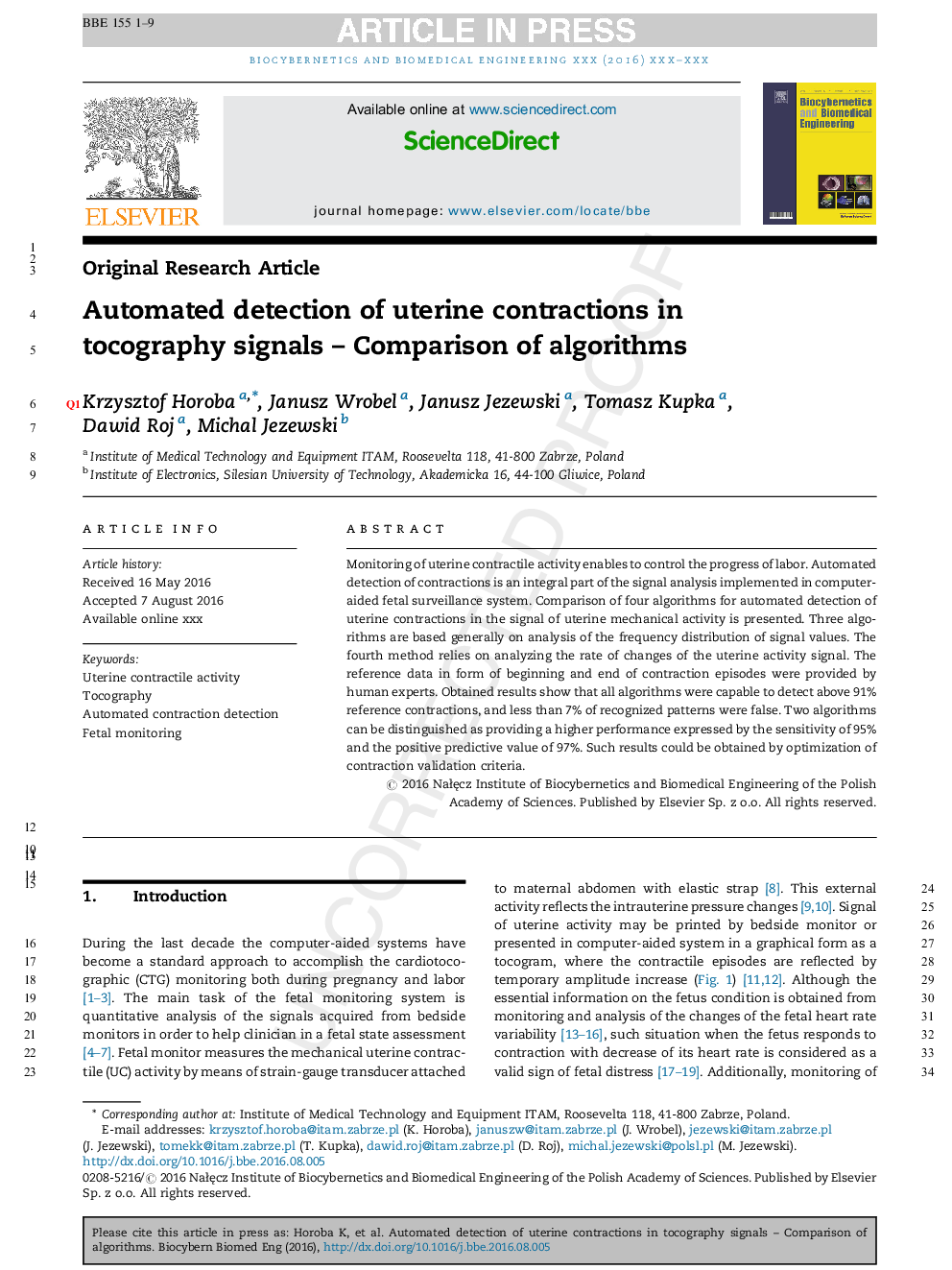| Article ID | Journal | Published Year | Pages | File Type |
|---|---|---|---|---|
| 6484263 | Biocybernetics and Biomedical Engineering | 2016 | 9 Pages |
Abstract
Monitoring of uterine contractile activity enables to control the progress of labor. Automated detection of contractions is an integral part of the signal analysis implemented in computer-aided fetal surveillance system. Comparison of four algorithms for automated detection of uterine contractions in the signal of uterine mechanical activity is presented. Three algorithms are based generally on analysis of the frequency distribution of signal values. The fourth method relies on analyzing the rate of changes of the uterine activity signal. The reference data in form of beginning and end of contraction episodes were provided by human experts. Obtained results show that all algorithms were capable to detect above 91% reference contractions, and less than 7% of recognized patterns were false. Two algorithms can be distinguished as providing a higher performance expressed by the sensitivity of 95% and the positive predictive value of 97%. Such results could be obtained by optimization of contraction validation criteria.
Keywords
Related Topics
Physical Sciences and Engineering
Chemical Engineering
Bioengineering
Authors
Krzysztof Horoba, Janusz Wrobel, Janusz Jezewski, Tomasz Kupka, Dawid Roj, Michal Jezewski,
